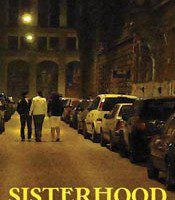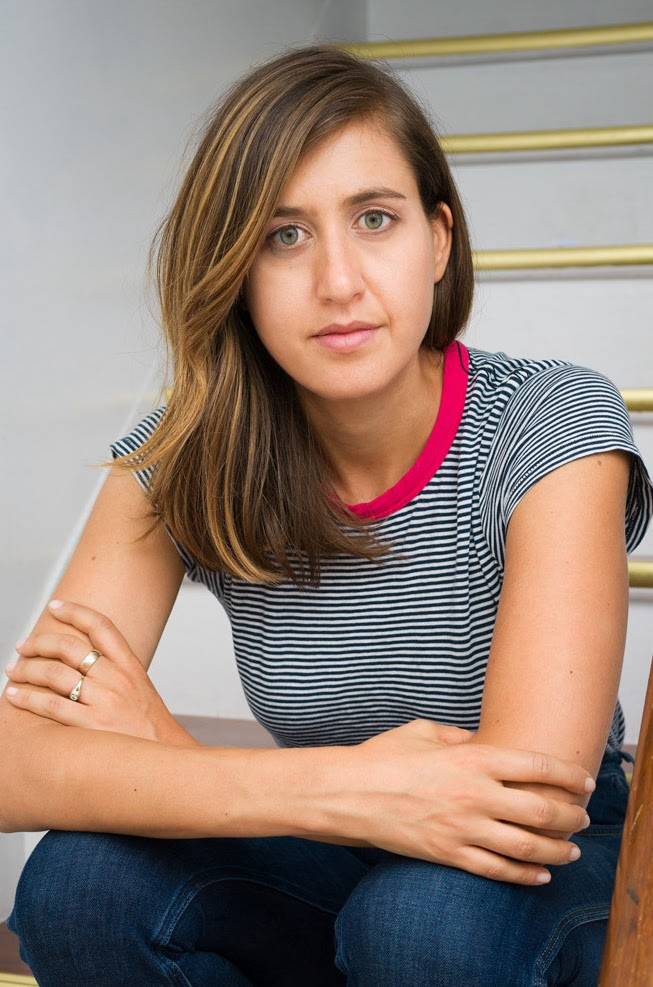Over the past few months I have had the pleasure of reviewing a number of the 2013 Lambda-nominated lesbian poetry collections, including Eloise Klein Healy’s A Wild Surmise, Stacey Waite’s Butch Geography, Tamiko Beyer’s We Come Elemental, and Kristina Marie Darling & Carol Guess’ X Marks the Dress: A Registry. I have mused over the range and diversity of what constitutes a contemporary “lesbian poem.” And I have been consistently surprised, not to mention frequently delighted, by the way the moniker “lesbian poetry” continues to challenge my expectations as a reader and teacher of poetry—and also as a lesbian poet.
One of my own most intractable expectations is that poetry written by queer poets will inevitably emphasize “coming out” as a central part of the poetic narrative or image system. I like coming out poems as a rule, and I have needed them as an emotional and aesthetic touchstone in my own life upon and beyond the page. At the same time, there is a subtle danger in assuming that queer poets’ primary work is, should, or must be centered in the past. What happens after you come out, a reader might ask? What about the present, the future? What does a queer life look like in practice?
Not to explore these questions would be much like pausing The Wizard of Oz just after the cyclone strikes, never following Dorothy past the black-and-white threshold of the newly relocated house. But this is precisely where Julie R. Enszer begins. Her new collection is not a book about coming out at all; it is a book about being out—unequivocally, without apology or explanation. Welcome to the bright, dynamic, wonderful world of Sisterhood.
The collection begins with a poem called “Moon,” which addresses in a direct and plainspoken way the many myths that surround women and their bodies: “At forty, my menses/ settle on twenty-eight/ days, unmoved by my/ wife’s cycle, unaffected/ by time with other women.” The speaker isn’t committing to anyone else’s story of what a woman’s cycle is for: “My menses never/ conjured magic. My body/ never bore children.” She is a woman making her own way in the world, navigating the advice and caveats of mothers, nuns, feminists, and lesbians. The sisterhood she seeks considers all these voices diligently while always honoring the voice within—the strong, persistent voice of self-knowledge.
Notice also how her wife is here in the third line of the first poem, acknowledged with the same casual candor as heterosexual women poets might acknowledge a “husband.” This is not a poem about her wife or about their marriage. This is not even a poem, specifically, about lesbian identity. It is rather a poem about being a particular woman who “always bleed[s] on/ Passover, Sukkot, Purim,” who “want[s] to live among the devout.”
This pattern of being out without coming out continues throughout the book—poems that reference a wife, a marriage in progress, without the need to explain or qualify for the reader the fact that the relationship in question is “same sex.” The why is notably absent; the lesbian relationship at the center of the speaker’s life simply is. In “A New Refrigerator,” this speaker addresses her wife directly: “I didn’t actually want one, but after your mother died,/you, with a big check in your pocket, became obsessed […] I tell our visitors that this refrigerator is/ your grief—large and in the way—transformed into my headache.” In “Visiting the Grave,” the speaker recounts, “It is already 5:30,/ and my wife grimaces,/ but this is what it is/ like when we travel for family.” This is also what it means to share a life with someone, regardless of orientation—the ways we shoulder each other’s burdens, and inevitably, the ways we try each other’s patience, too.
Of course there are experiences in long-term partnership that transcend the genders of the partners. Enszer compellingly illustrates such universals in her poems. Other experiences are more particular to the queer person or queer couple living in a predominantly heterosexual world. One poem that captures heterosexual presumption powerfully is called “Durio Zibethinus,” in which the speaker addresses herself in second person, and in so doing, draws the reader closer, implicates the reader more intimately in her experience: “It is your first time in Asia. It is your/first time in a Muslim country […] The bookseller wants to read your palm. He wants to read/ the indentations in your skull. He holds your hands/ and your head and asks you, Are you married?/ Are you married? Are you married? He suggests/ he could be a good husband for you.”
Perhaps for queer readers in particular this scene serves as a reminder of the ways in which we are not always visible, the ways in which “coming out” is never a finite act, the ways in which choosing again and again, as our speaker does, to be out in her life is never a simple or inconsequential choice: “You finally/ tell him that you actually do have a husband/ but she is your wife, a woman; you are a lesbian.” I love the candor and the humor here. This speaker could have said, “Yes, I am married,” but she chooses to be fully honest and not to mislead her inquisitor: “He goes slightly crazy. He tells you, Your body/is a temple, which you already know. He says, It takes 4.5 million years to get a human form, which you did not know and are not sure/ you believe. He says, Why do you waste/ yourself, your human form, your body, your temple/ on this gay mess.” Being out means opening yourself to criticism like this, allowing yourself to become the subject of judgments like these—but not allowing them to break you. I find Enszer, the poet and her speaker, astonishing in her quiet, consistent, and matter-of-fact courage.
Perhaps it is not courage only, but a well-tended (and much-needed) optimism. This is a speaker, after all, who tells us sincerely, “This is what I know of life:/ Love fiercely, even recklessly;/ Laugh loudly, even raucously; /Risk everything, at least once; / Live openly, without abandon;/ Build trust; be honest.” This is a poet who has earned the right to present such imperatives to her reader. The surrounding poems demonstrate her commitment to, and in fact her embodiment of, these ideals.
And so it is with the most fraught ideal of them all—for women, for lesbians, for feminists: sisterhood. Even as I write this, I glance over at my bookshelf at the ragged copy of Robin Morgan’s 1970 anthology of second-wave feminist writings, Sisterhood is Powerful. Nearly half a century later, what does this word mean to us? Enszer writes, “I want to believe in some sort of transcendent,/ feminist sisterhood.” What does or would this sisterhood look like in practice? I’m not sure, but I want to believe in it, too.
Like many poets and feminists and feminist-poets before her, Julie Enszer approaches the ideal of sisterhood via the credo, “the personal is political.” At the fulcrum of her book the title poem appears—written in twelve parts and tracing both the life and death of her biological sister, Lara. Of Lara’s death, Enszer writes, “An unseen semi down an empty/ morning highway crushed/ her against Oregon igneous.” This is akin to the moment of coming out—the moment of full disclosure, where she shares with her readers precisely what has occurred. Lara was in her early twenties at the time. There are two sisters who survived her. The rest of the poem, and indeed the rest of the book, grapples with what comes after such a loss—not the losing so much as the living on. What does it mean to live without Lara in practice?
By analogy again, this is the queer poet asking, “What does it mean to live without the social and political safeguards of heterosexuality?” The literal sisterhood and the metaphorical sisterhood—the biological family and the queer family—are all deeply and finely imbricated in these poems.
Life is complicated for everyone, as we know, and death even more so. Enszer documents these complications with her signature candor and humor. The nomenclature of family becomes especially complicated in matters of identity and moments of loss, as her poems suggest and reveal. (Or perhaps the nomenclature of family is always complicated, and matters of identity and moments of loss simply magnify its significance.)
For instance, as the long poem “Sisterhood” unfolds, we encounter a section titled “Widow,” which begins:
After my sister’s death,
we learn she had been married,
but they discovered six months
before her death. Her current-in-death
boyfriend, T, just T, has long, stringy hair
and no suit for the funeral.
[…]
In their grief, my parents reject
the lettered simplicity of my sister’s
final squeeze and embrace
the would-be, but for the divorce,
widower. This faux son-in-law
becomes a proper finish
to my sister’s abridged life.
I am struck by the poet’s inventive use of language to illustrate its limits: “current-in-death/boyfriend,” “would-be […]/ widower,” “faux son-in-law.” These limits are not exclusive to same-sex couples who have not until recently had access to the nomenclature of marriage, the familial significance of “spouse.” The speaker mourns in an epistolary poem addressed to Lara, “You have never/ met my wife and/ will not see the thirteen/ red roses I’ll bring/ home tonight–/one for each year/ of our shared life.” Her language here reminds us once again of its flexibility and capacity for change—how a woman can have a “wife” after all.
Then again, Enszer’s language also reminds us of the failures of language, and with them, the failures of human connection: “Ten years after my sister’s death,/ I learn from my father/ the would-be widower is sick./ Death is certain.” What does it mean to lose a member of one’s family to divorce and then to prepare to lose him again to the finality of death? Enszer acknowledges all the inevitable subjunctive leaps, the would haves and could haves that attend our worldviews: “My sister, had she not died,/ would be a widow, had they not divorced,/ and left with young children,/ had he not had a vasectomy […] I urge my father,/ who clearly loves this man as a son,/ to go, visit him. He never does.” She then resists the temptation to give us a trite or falsely happy ending.
I am convinced there is no place Julie Enszer won’t travel in a poem—nothing too simple or sacred or difficult to say. And I am certain there is no place I won’t follow her, in these poems or the poems to come. Even the cover of this collection is tinged yellow under blurry street lights, the picture a long street with the word SISTERHOOD printed in bold, golden caps.
Am I reading too much into this? Perhaps. But I see what I see nonetheless: a new and necessary journey down a queer and complex Yellow Brick Road.




